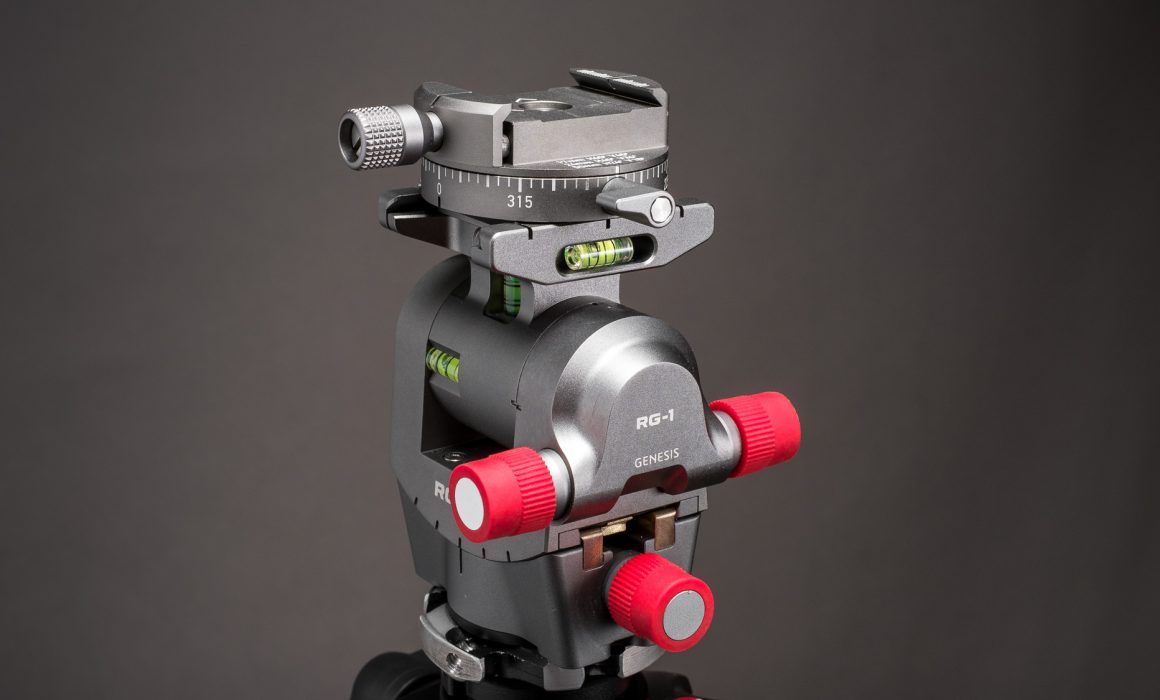Rogeti RG-1 + 50mm TSE Frame Review
When I first started working as an architectural photographer, my Manfrotto X-PRO3 head lasted about a year before seizing up. I upgraded to a Manfrotto 410 geared head, which, clunky as it was, turned out to be a huge upgrade. While it is a solid tool, working with it on a daily basis came with a few annoyances.
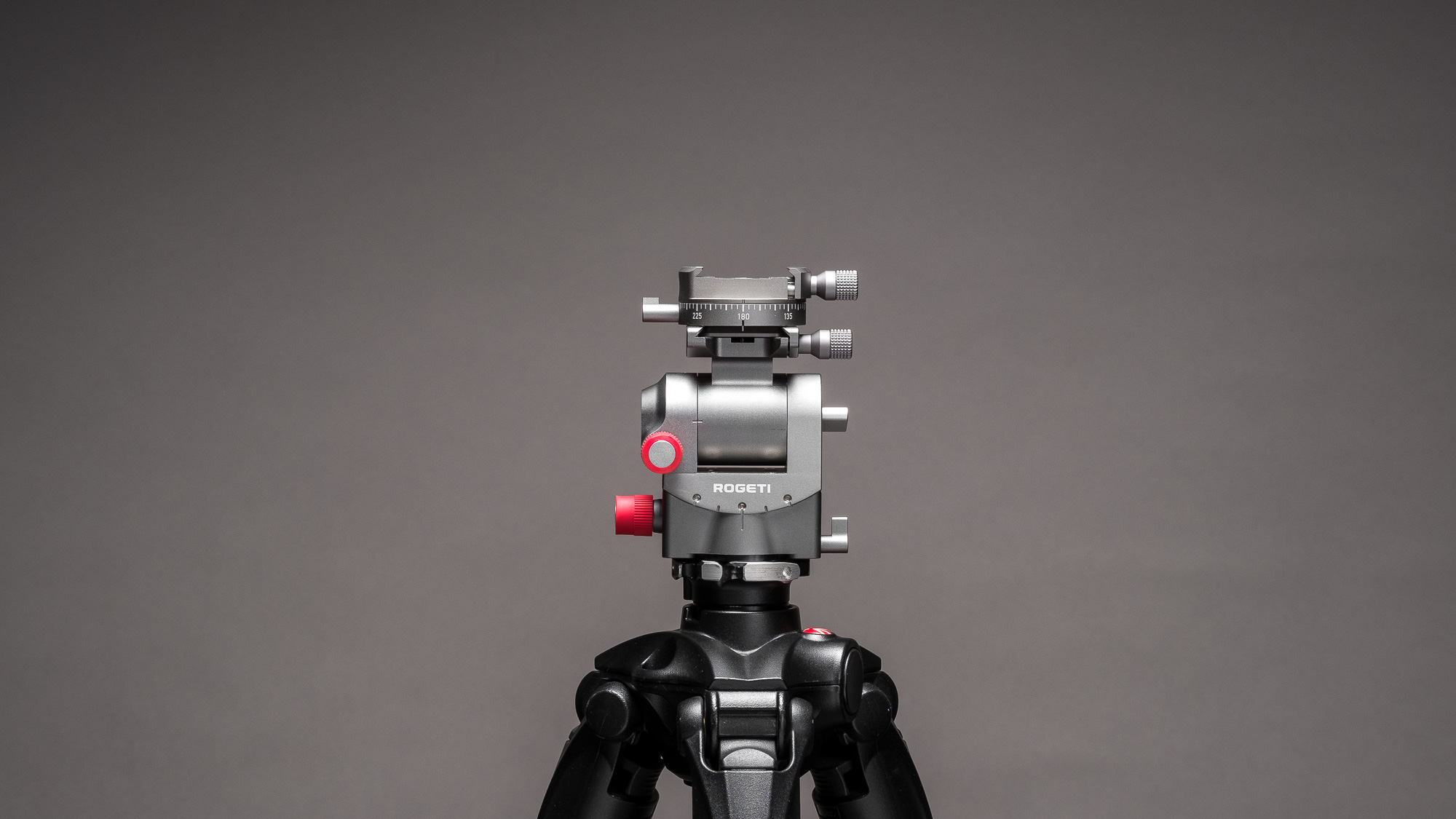
Rogeti RG-1 with optional panning clamp attached
I am a fan of the 410’s ability to make both fine and fast adjustments independently on all three axes, but mine has a lot of play and is very heavy. So I started looking for an upgrade. Unfortunately, alternatives on the market are few and far between. Even premium options from Arca Swiss come with drawbacks that I find astonishing in a product that sells at such an extreme price tag.
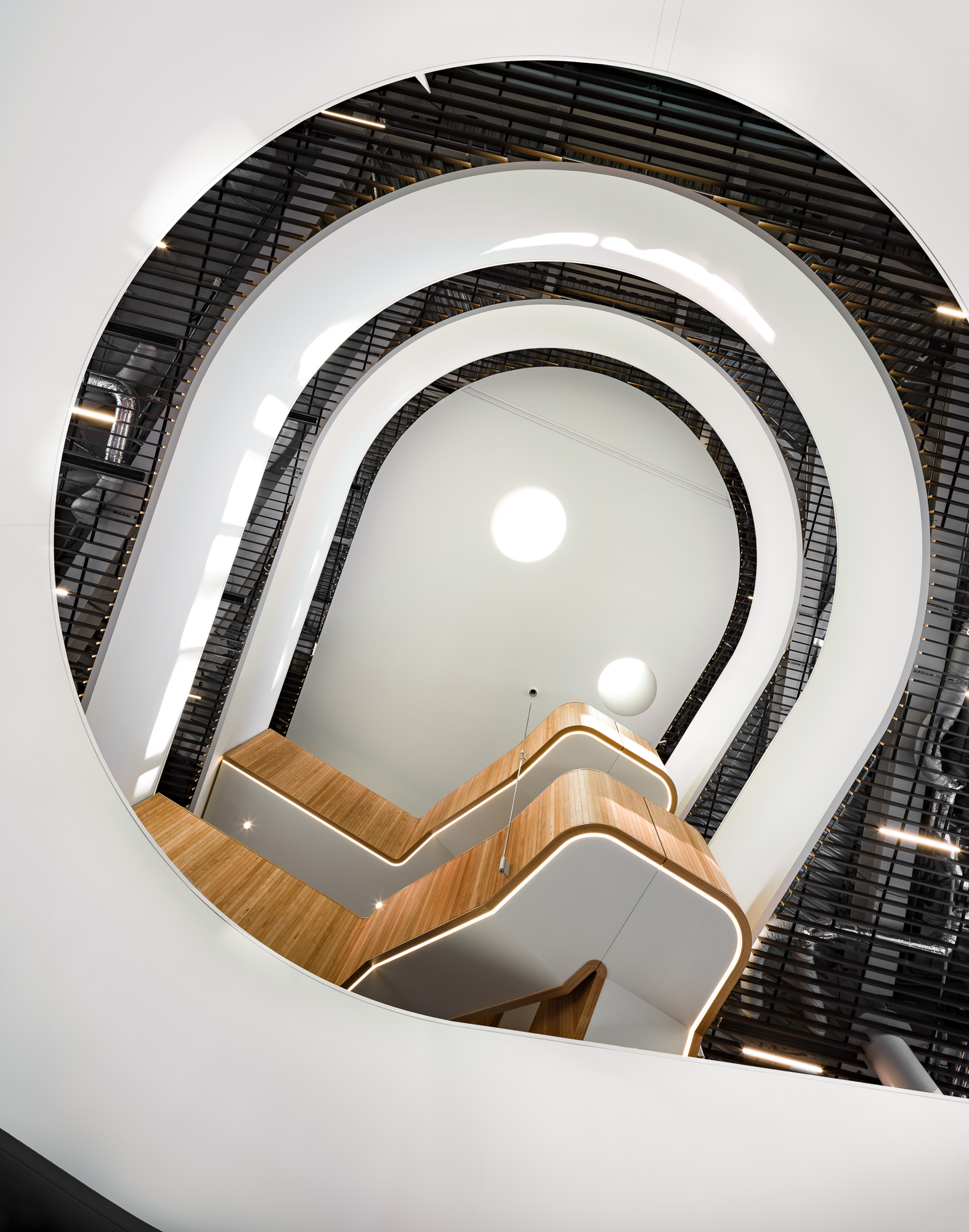
Diagonally shifted panorama, Canon 24mm TS-E II on Fujifilm GFX50S, shifted to all four corners
Since I really enjoy my Rogeti TSE-Frame, I was thrilled to see Rogeti announcing a geared head for architectural photography. Then again Rogeti did not seem to have any prior experience with something as complex as a geared head, so I had my reservations whether they could pull it off on their first try. I asked them a few questions on social media about the teaser images, and was offered to have a go with an early production sample. The timing was great, since I was about to shoot a lot of big public projects across the country that would push the gear to its limit.
First Impressions
When I took the RG-1 out of its box, I was surprised how small it was compared to my Manfrotto 410. In terms of size it easily competes with some of my ballheads, which is astonishing given the complexity of a geared head. Next to the simple lines of the RG-1, the Manfrotto 410 looks like something that fell off an army surplus truck.

Rogeti RG-1 (with optional panning clamp) vs Manfrotto 410 (with Hejnar Arca conversion kit and Sunwayphoto Arca clamp)
One of my main concerns with the RG-1 was Rogeti’s approach to input mechanics. When the head was first announced, a social media statement by Rogeti suggested that the head would have a clutch-and-gear mechanism on all three axes. But then the first images of the head were released, and I could not see how that could possibly be achieved with the available controls.
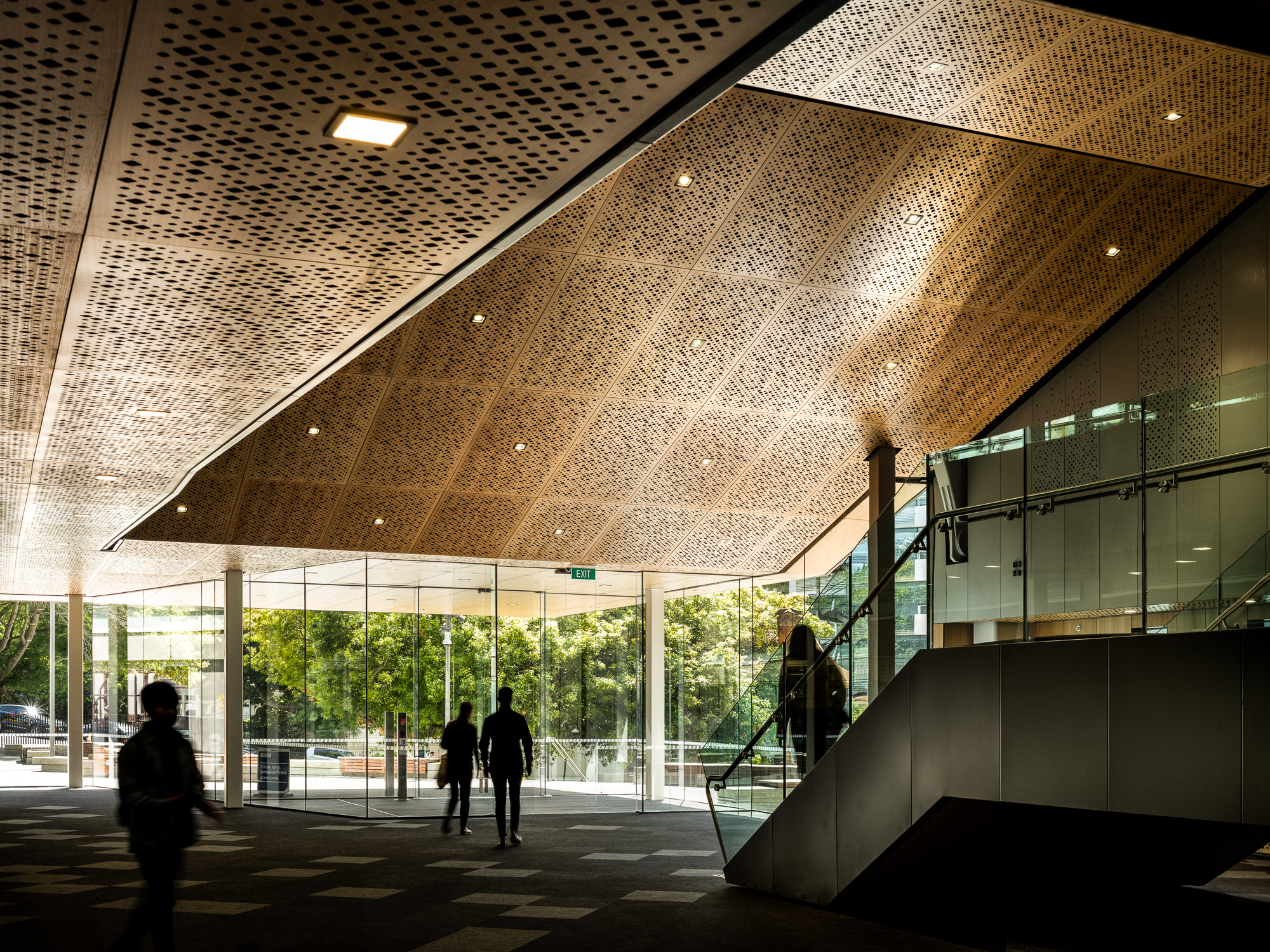
Complex composite for exposure and people requiring a stable platform
Where the Manfrotto 410 offers a somewhat crude yet well-working clutch-and-gear mechanism on all three axes, the Rogeti RG-1 comes with a different control logic for each axis:
- The yaw (panning) axis has neither clutch nor gears. It is only controlled with a tiny lockout lever. A detachable panning clamp adds another pan option, but with the same type of lever.
- The roll axis (levelling the horizon) is adjusted by a geared mechanism through one red knob
- The tilt (up/down) axis offers both a geared (two red knobs) and a fast adjustment (silver tab)
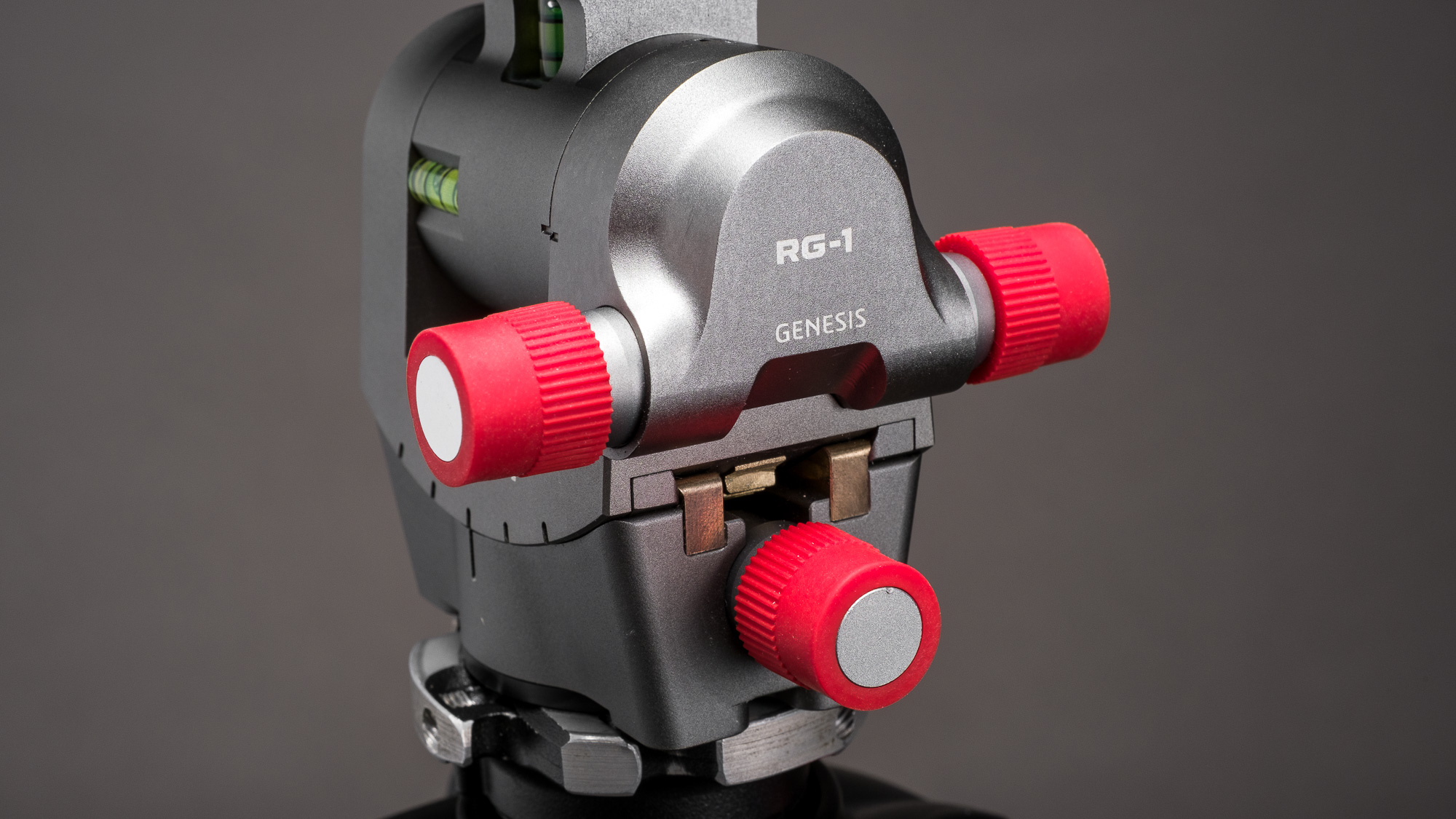
The soft rubber knobs feel great but I have concerns about their longevity
It took me a while to accept that Rogeti made some deliberate choices with this product. I generally appreciate consistency in control interfaces, and the RG-1 is anything but consistent. As opposed to the 410, every axis comes with its own logic. After working with the RG-1 for a few hours my concerns around this inconsistency mostly vanished, though. More on that later.
Compromises
The Venn diagram of geared tripod heads might look something like three intersecting bubbles labelled function, weight and price. It is very clear that Rogeti chose an in-between solution that meets most requirements without being as clunky as a Manfrotto 410 or as expensive and heavy as an Arca C1 Cube. The head’s saving grace lies in its buttery smooth geared adjustments. I was surprised to find that I did not miss a clutch mechanism on both geared axes.
As a matter of fact I barely used the single clutch on the tilt axis. I cannot overstate how good a job Rogeti did with the geared mechanism. It is light, smooth and somehow allows fine adjustments without compromising on speed. With a few quick turns of the red knobs the head is levelled quickly and precisely. I never felt like the adjustments were painfully slow, requiring an excessive amount of turns, a criticism that I heard in regards to the Arca C1 Cube.

Silver quick-adjustment knob for the tilt axis
My main gripe is the lack of a geared panning. Rogeti certainly made the right choice in giving the other two axes geared adjustments, while pan is arguably the axis that requires it the least. Looking at the market for geared heads, most competing products seem to follow the same logic. Coming back to the Venn diagram of geared tripod heads, I would be willing to compromise on weight and price in return for geared panning. For most parts panning with the RG-1 was not too bad, but I vividly remember situations where each minute adjustment that I was trying to make slightly overshot. At the end of a long production day that can get somewhat annoying.
I preferred panning with the optional panning clamp that can be stacked on top of the integrated clamp. Not only does it offer slightly more resistance, it also allows for levelled panning. Panning from the bottom of the head results in a crooked horizon and fiddly adjustments due to a lack of friction, and should only be used for a quick ballpark adjustment at the start of the levelling process.

Diagonally shifted panorama, Canon 24mm TS-E II on Fujifilm GFX50S, top-left and top-right
Almost There
My suggestion to Rogeti would be to offer an optional geared panning clamp. That way the RG-1 can stay within its price and weight bracket, and control freaks like me can pay a little extra to upgrade the head. Better yet, offer the head with a modular stem, so the standard clamp can be removed. I really love my Novoflex Q=Base II quick-release clamp, and it is annoying that I have to stack several clamps on top of each other to use it. Each additional clamp adds a screw that could be undone by accident, resulting in tears.
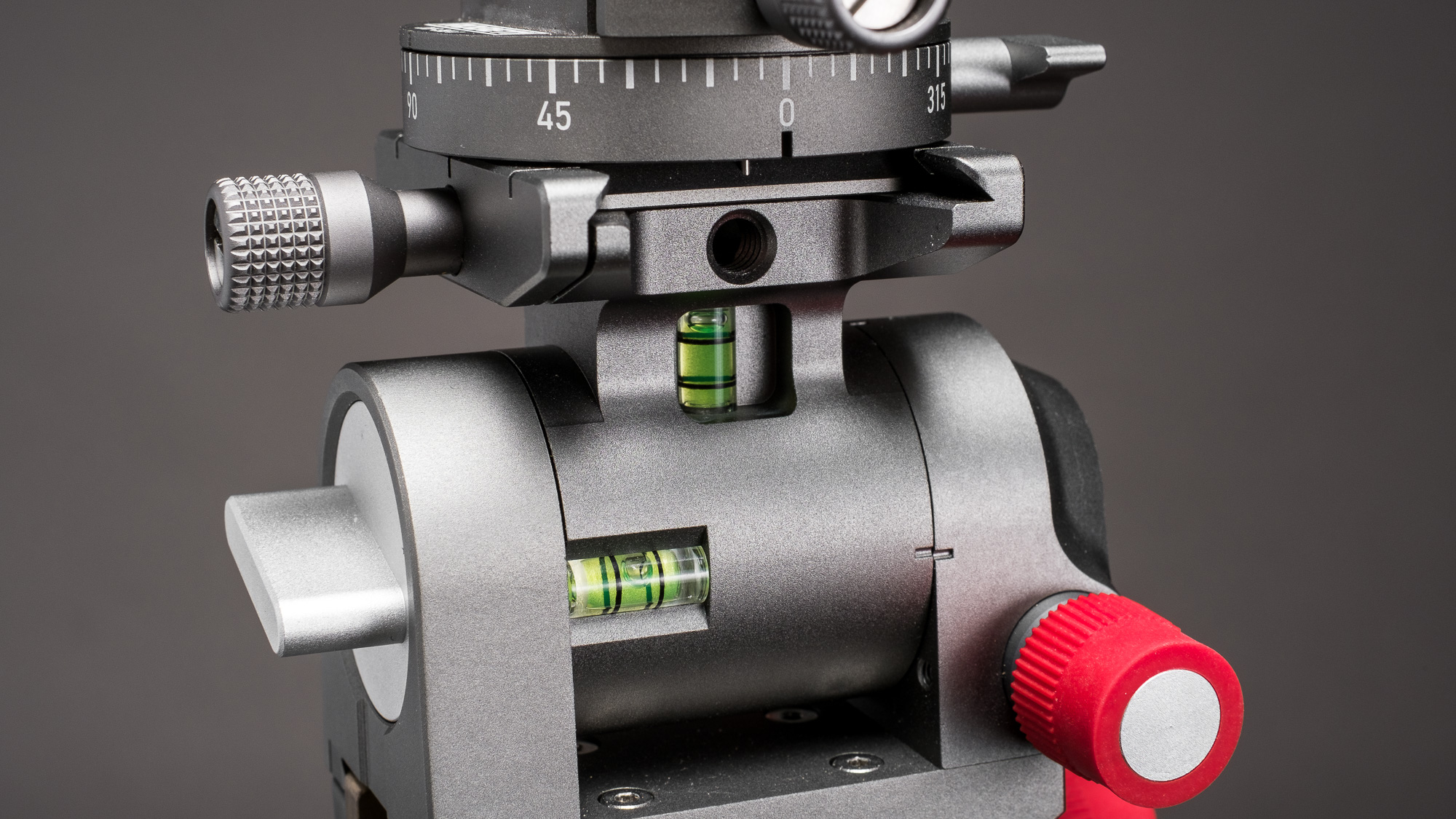
Spirit levels everywhere
When compared directly, I would hands-down use the RG-1 over my old 410 head. The benefits offered by the 410’s controls is more than negated by a lot of play in its mechanism. According to my research this can attributed to the clutch mechanism, which wears out the gears over time. I honestly cannot remember a time when it did not have any play, even when it was new. This has ruined a lot of complex compositing work over the years, where perfect alignment between shots is a necessity. Try blending various flash and ambient layers with the head moving between every shot. This is another area the Rogeti excels in: It is 100% rock solid with zero play.
Rogeti TSE Frame Update
In my last review of the TSE Frame for Canon’s 24mm TS-E II I covered the benefits of this unique piece of kit. I have since added a Canon 50mm TS-E to my arsenal and ordered another Rogeti TSE Frame that fits this lens. My biggest criticism was with the extremely slow spirit level vials in the older frame. They were sluggish in warm conditions and unusable in the cold. Letting the whole system settle for several seconds every time I touch the head was a major pain. I was therefore relieved that Rogeti heeded the feedback and replaced the vials with faster ones. Adjustments can be made on the fly now without having to wait for the bubble to settle.
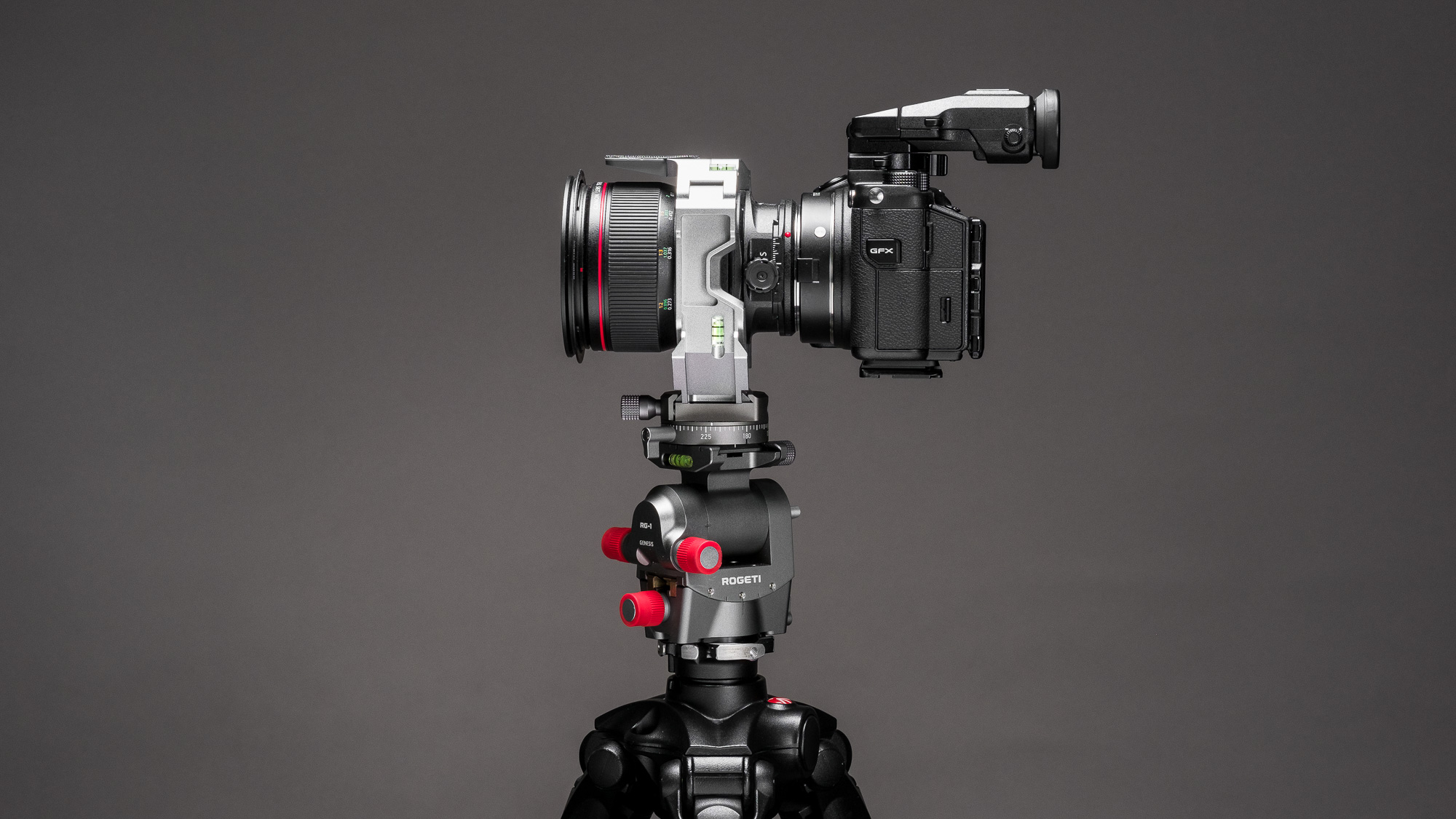
Unfortunately, I had vials fall out of my 50mm TSE Frame. Rogeti sent me a replacement, but the same thing happened again while taking pictures for the review, where a vial just dropped to the ground. I’m sure this will be easy to fix with the right glue, and I’m currently waiting for Rogeti’s support to let me know which glue works well without dissolving the plastic.
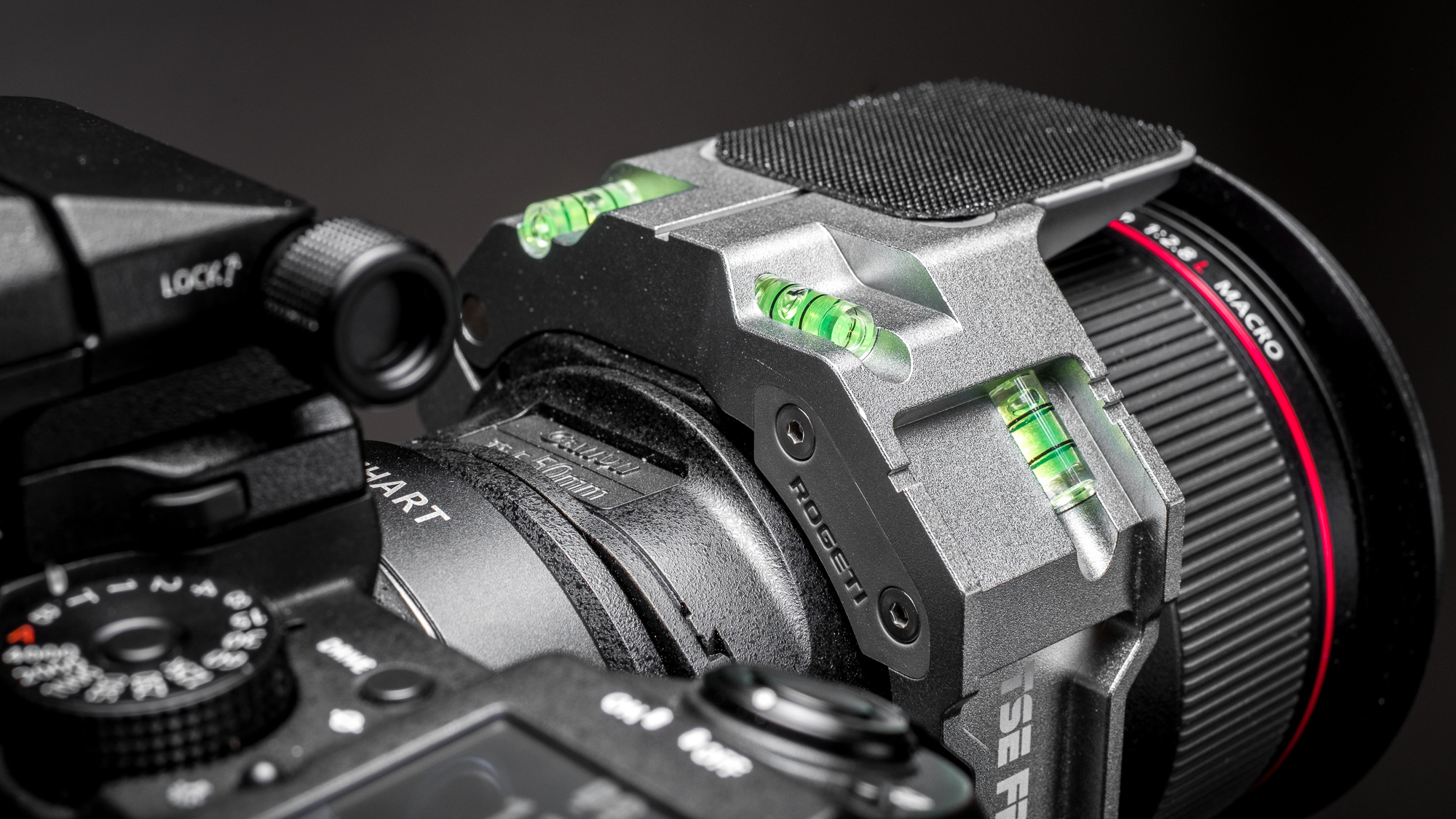
The upgraded spirit levels of the TSE Frame now respond to changes instantaneously
Otherwise the frame works as well as ever. Since my last review I have mastered the fine art of diagonal stitching (instructions here), which has opened new possibilities for parallax-free ultra-wide panoramas that extend on more than one shift axis. Instead of just shifting up-and-down or left-and-right, diagonal shifting allows me to shift top-left, bottom-right, bottom-left and top-right. Combined with the RG-1‘s really convenient 90 degree clutch adjustment, I can now easily shoot straight up and capture massive images of ceilings. On the Manfrotto 410 this was extremely cumbersome due to collisions between camera and control interfaces.
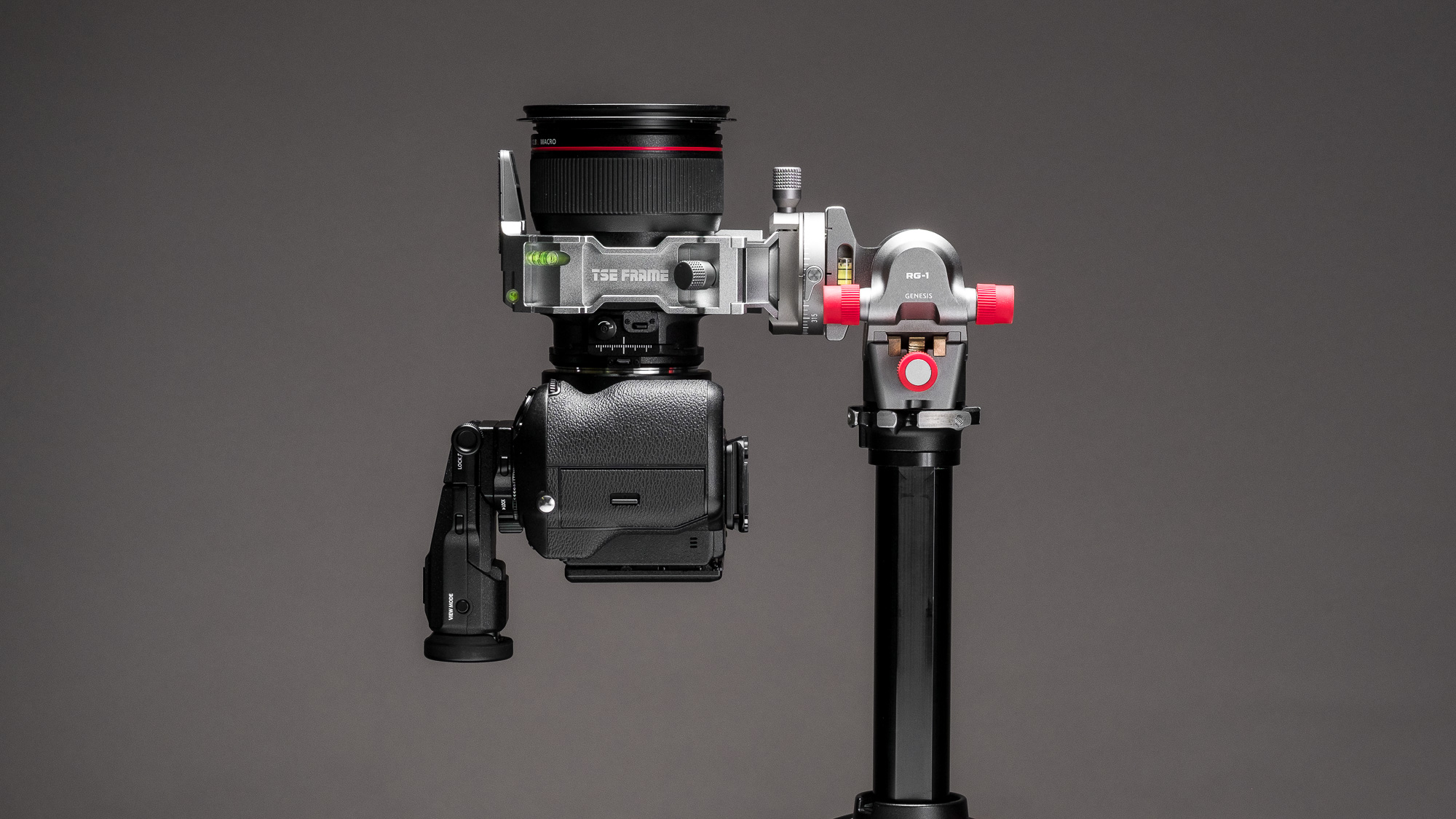
Conclusion
Rogeti’s debut to the tripod head market has surprised me. It is no small feat to deliver a product of such high quality on a first attempt. After using the head on ten intensive commercial shoots of up to twelve hours at a time, I would not want to go back to my 410. I was expecting to miss the clutch mechanism of the 410, but due to the amazing gears of the RG-1 I haven’t looked back. As a matter for fact, I only used the clutch mechanism when tilting the head up 90 degrees for ceiling shots.
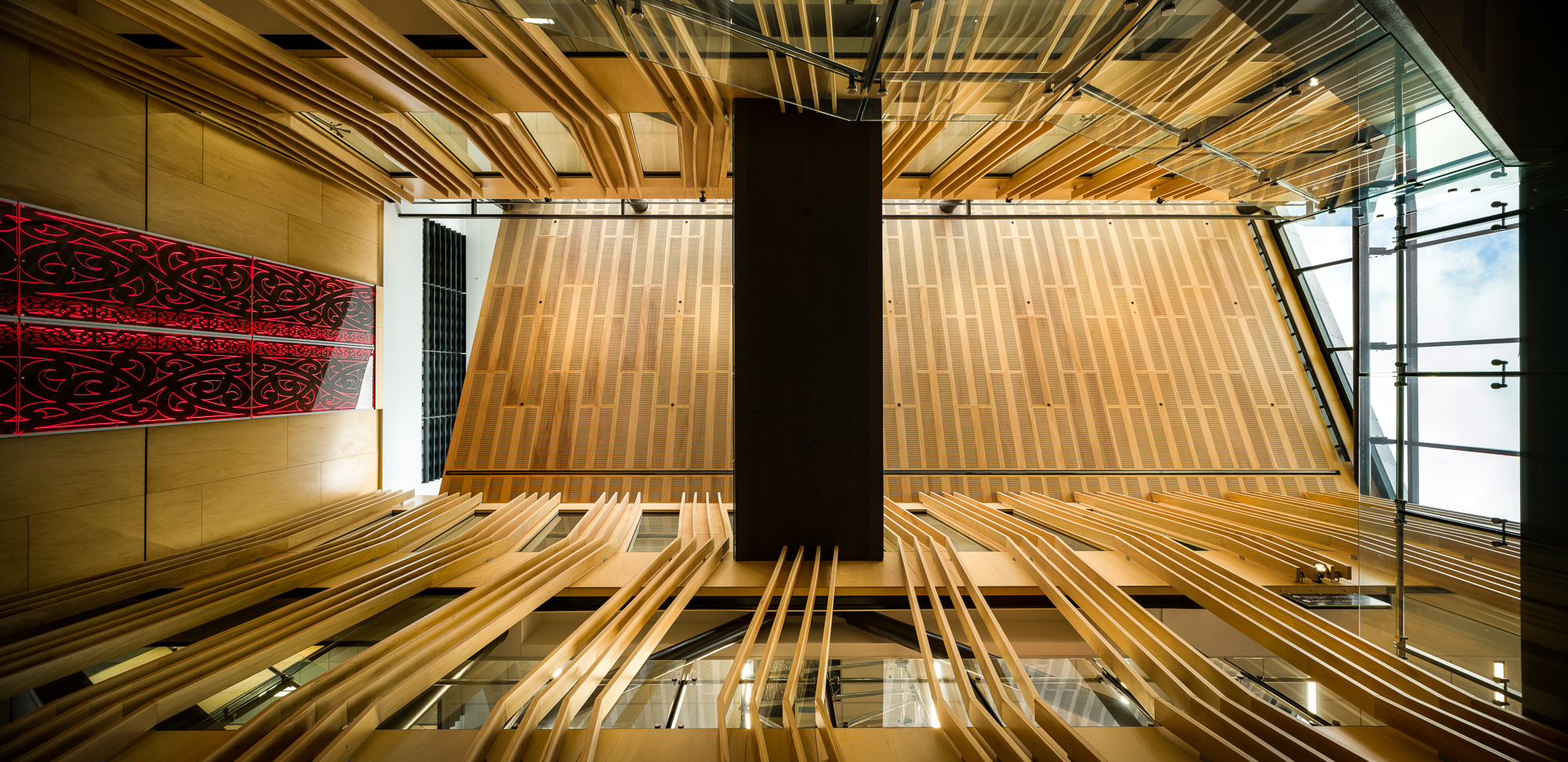
Horizontally shifted panorama, Canon 24mm TS-E II on GFX50S, left and right
My main gripe with the RG-1 lies in its lack of control on the pan axis. If Rogeti offered an optional geared panning clamp (like an Arca C1 GP), those with a need for finer panning control could just pay a little extra while keeping the price lower for everyone else. Combined with a modular stem and slightly larger controls this imaginary RG-2 would be my ideal geared tripod head. I understand that a geared panning base requires some R&D, but the modular stem should be a lot easier to implement.
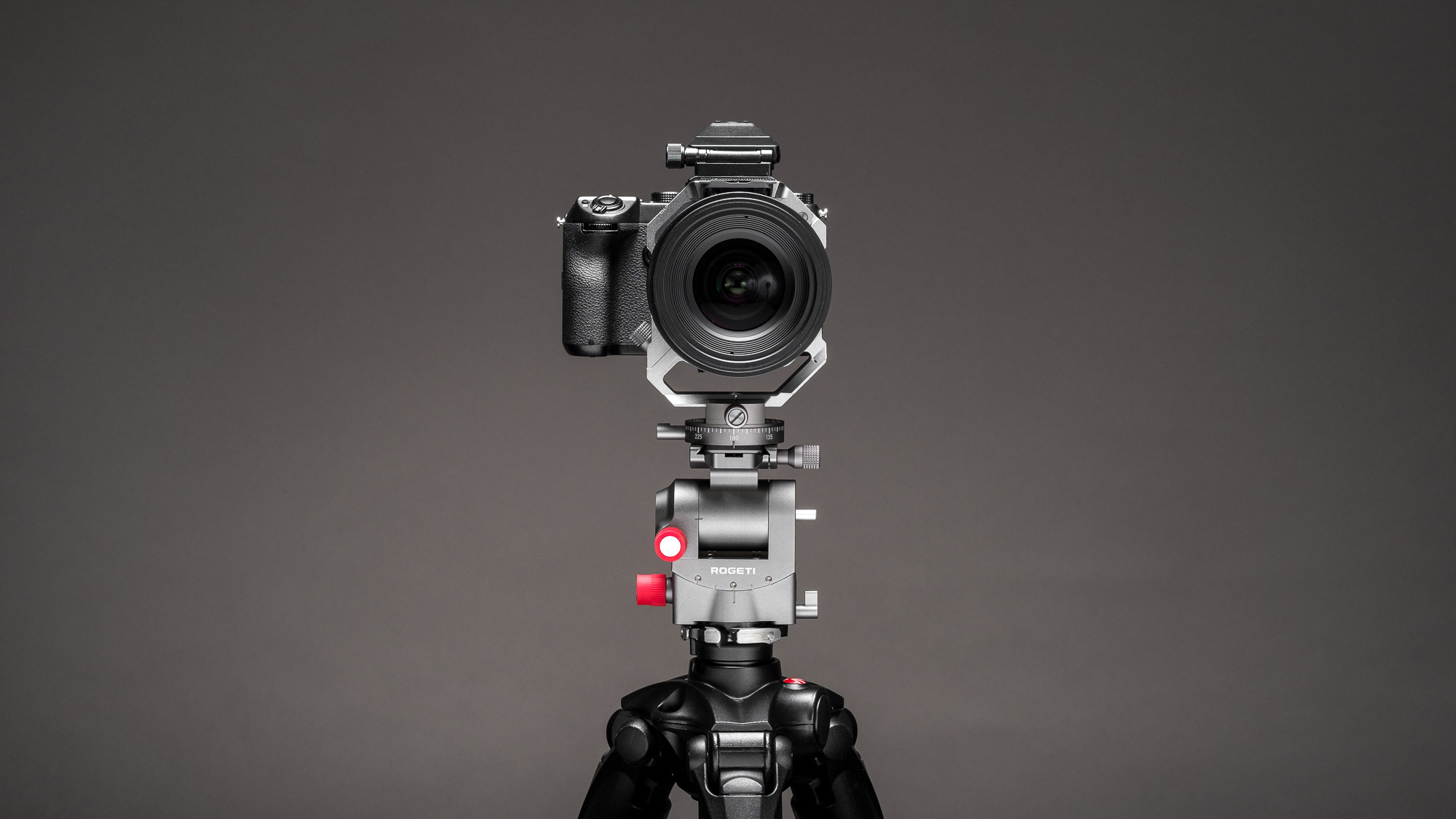
As it stands, the RG-1 offers a good balance of features. Compared to a Manfrotto 410 it is significantly more expensive while coming nowhere near the weight-in-gold pricing of an Arca C1. For a professional tool it certainly offers good value for money. Whilst working with the RG-1, I often found myself relieved that I did not have to do the job with my Manfrotto 410. Especially used as a system, the combination of RG-1 and TSE Frame provides workflow advantages that I would not want to miss going forward.


